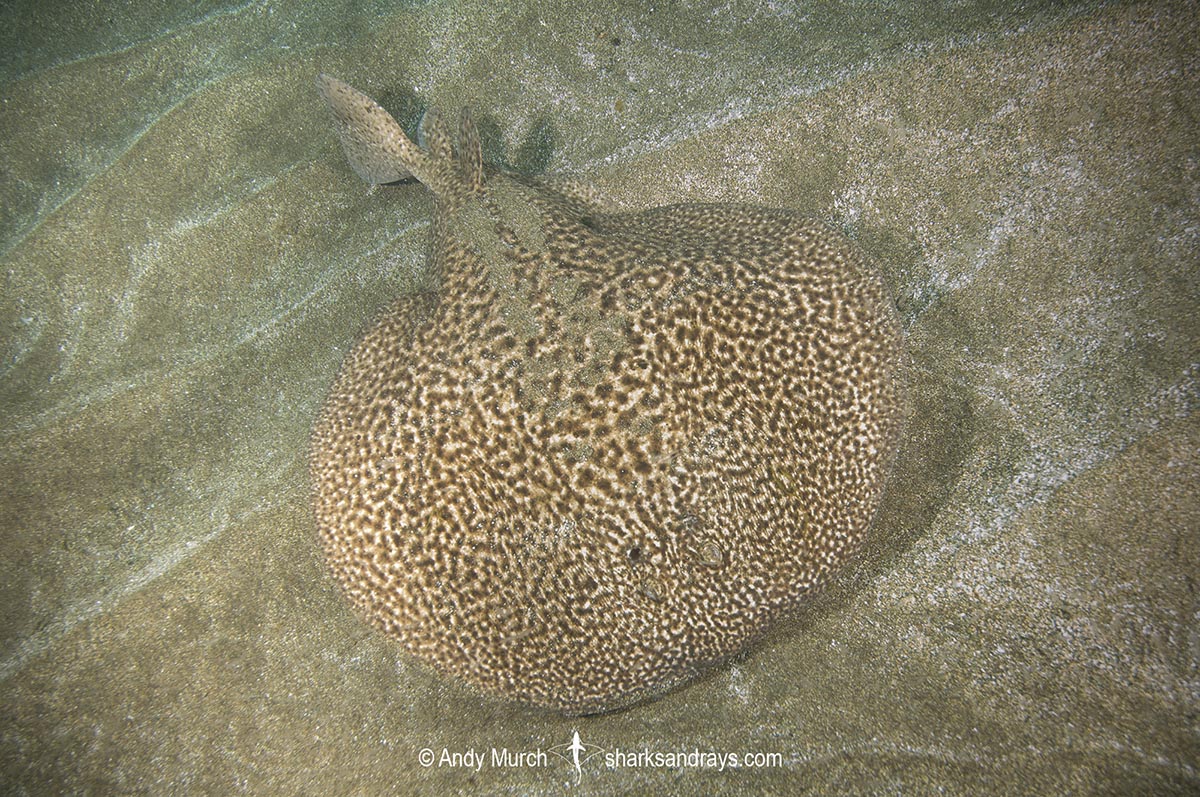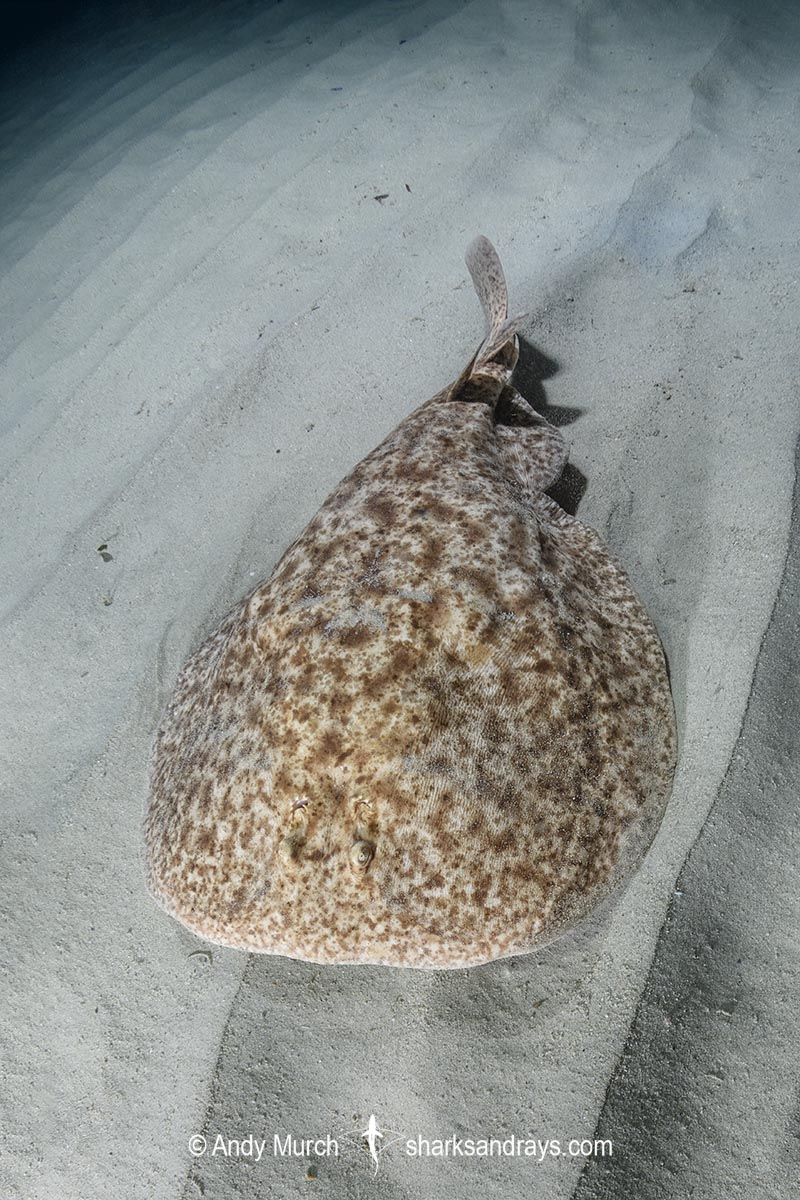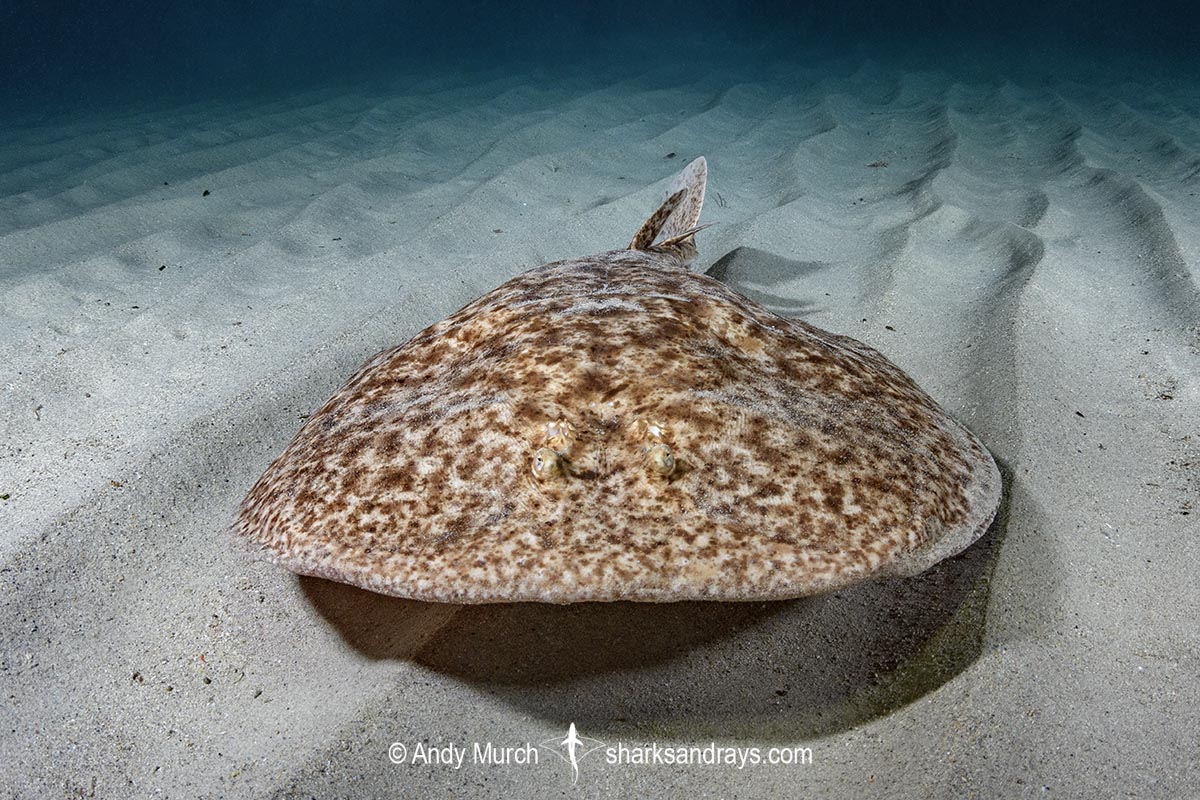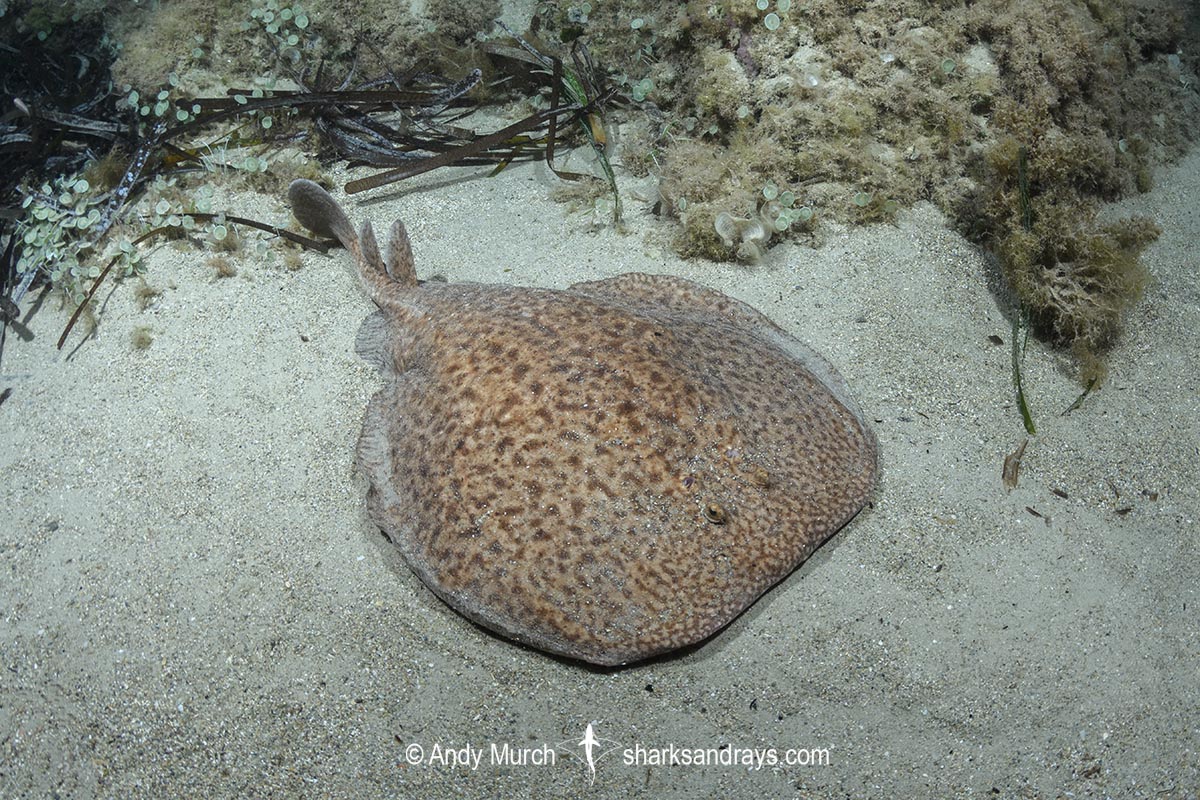Common name(s)
Marbled Torpedo Ray, Marbled Electric Ray, Spotted Torpedo Ray.
Binomial
Torpedo marmorata
Synonyms
Narcacion marmoratus, Narcobatus marmoratus, Torpedo Torpedo marmorata, Torpedo diversicolor, Torpedo galvani, Torpedo immaculata, Torpedo picta, Torpedo punctata, Torpedo trepidans, Torpedo vulgaris.
Identification
A medium-large torpedo ray with a broad sub-circular disc. Snout short, tip straight across, sometimes with a bulbous central lobe. Pectoral fin apices broadly rounded. Eyes small and spiracles smaller and well separated. Spiracles circular with 6-9 thin papillae pointing towards centre. Mouth arched. Nostrils with well defined nasal flaps.
Pelvic fins long, margins broadly rounded. Tail short and broad based. Dorsal fins tall with broadly rounded apices and posterior margins. First dorsal posterior margin over pelvic fin. Caudal fin large, sub-triangular or oval, apices broadly to narrowly rounded, posterior margin convex.
Colour
Dorsum greyish brown to dark brown, with a dense pattern of pale blotches and vermiculations that form an irregular marbled appearance. Ventrum white.
Size
Maximum length 100cm but usually ~60cm. Size at birth 10-14cm.

Conservation Status
VULNERABLE
The marbled torpedo ray is taken as bycatch in numerous commercial fisheries throughout its range including demersal trawl fisheries, coastal trammel nets and bottom longlines. It is usually discarded at sea due to its low commercial value, but may be retained in Africa.
The marbled torpedo ray population is thought to be stable in the Mediterranean, but has declined in the eastern Atlantic where fishing pressure is highest. In the last 48 years, the overall population is suspected to have been reduced by 30-49%.
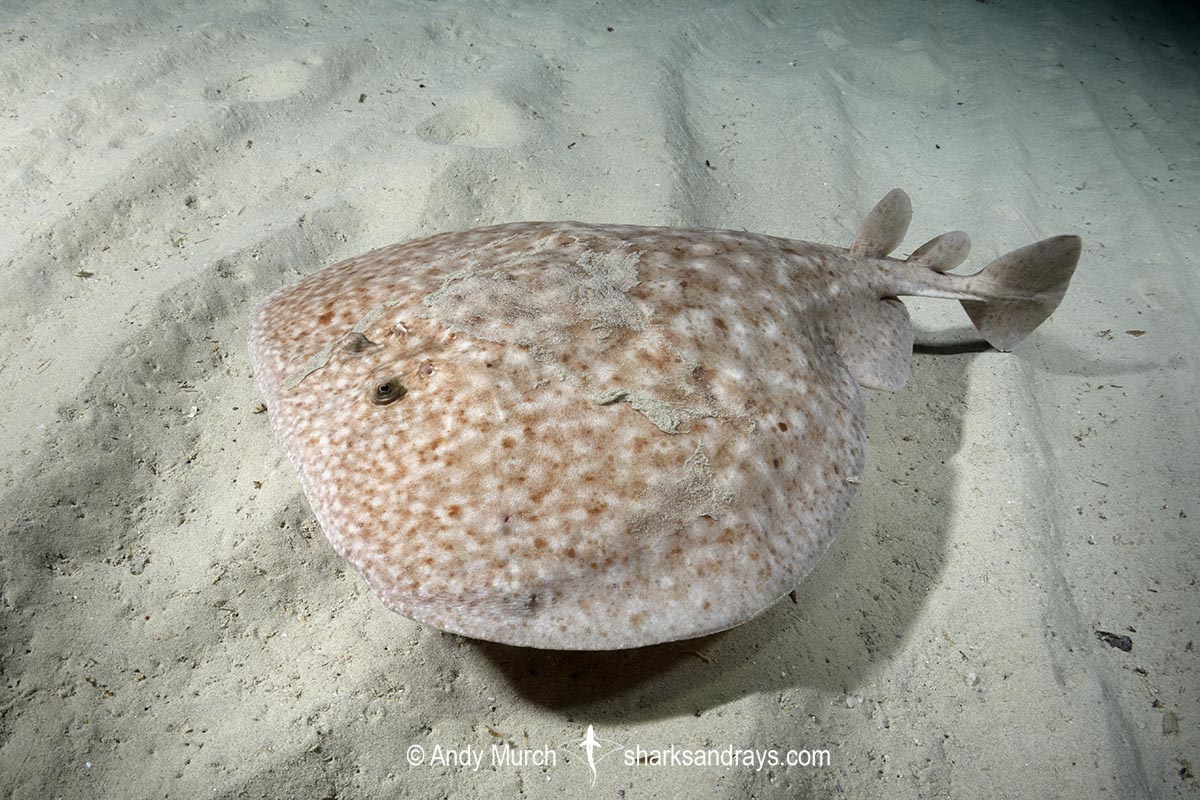
Habitat
Temperate to tropical seas. Benthic on soft bottoms, seagrass beds, and rocky reefs. Found close inshore and on continental shelf and upper slope. From 10-370m.
Distribution
Eastern Atlantic and Mediterranean. The marbled torpedo ray occurs from southern Scandinavia to South Africa including the Mediterranean Sea.
Reproduction
Aplacental viviparous. Litter size 2-32 pups. Gestation ~10 months.
Diet
Diet consists of small benthic fishes and invertebrates.
Behavior
Nocturnal; remains buried under sand during the day.
Marbled torpedo rays can produce electric discharges of up to 200 volts. Even newborns can use their electric organs to incapacitate prey.
Reaction to divers
Easy to approach. Rarely swims away but may try to shock divers when threatened.
Diving logistics
Marbled torpedo rays are encountered at numerous spots throughout their range. They are often seen at dive sites in the Channel Islands (UK), around the Mediterranean, and at the Canary Islands off northwest Africa.
One great spot for marbled torpedo rays and many other ray species is Playa La Granadella on the Mediterranean coast of Spain.
What’s new
View our full list of updates
Similar species
Rosette Torpedo Ray Distinguishable by dorsal pattern consisting of small rosettes.



